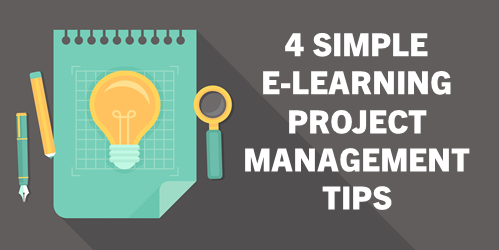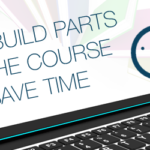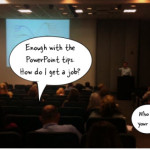A few tips come to mind to share to help prevent projects from getting derailed:
– Have your stakeholders determine up front whether legal/compliance sign-off is required. They’re typically more interested in the “words” whether that is a learning plan, storyboard, VO script, whatever.
– Determine draft cycle cadence and milestone due dates, whether a primary stakeholder will vet comments (especially conflicting ones, and whether you’ll interact asynchronously or live review meetings or a combination.
– First time working with a given SME/Reviewer? Hold a planning sesh to review how projects go, what’s needed from them and the kind of feedback you’ll be looking for.
– Be sure to not overstep your role – it’s not “your” course, it’s your stakeholders’ course. Be an adviser, provide what you recommend for or against in terms of what will be effective in helping your stakeholder and learners achieve the goal and purpose of the learning.
– Consider other ways to help contributors/reviewers on task:
-setup the project planning and tasks in a tool that the business uses for non-learning projects? Invite stakeholders to use the project planning tool used by the learning team?
-weekly brief status check-in (live) syncs
-when sending draft release emails, include the Outlook reminder feature for recipients
-be realistic on regular project updates whether it’s on track, at risk, off track
-ask for help from your manager if you need it whether it’s managing difficult stakeholders or other project challenges to stay on track
4 Simple E-Learning Project Management Tips
October 5th, 2021
I get a lot of project management questions, specifically how to keep the projects moving forward successfully. The two most essential elements are expectations and communication.
Understand the Purpose of the Course
When meeting with clients it’s important to understand and identify the learning objectives. And then from there, to craft a good learning plan.
What do they need to know? How do we know they know it? How will the learn it? OK, let’s build it!
Create a Service Level Agreement
What is the final product going to look like? What are the course requirements? When’s the due date? How will it be implemented?
Outline the entire production process and discuss who does what and when. Identify a due date and the measure of success. Then get them to sign-off on that agreement. Whenever, there’s a dispute, refer to the agreement as the foundation for the work required.
Concerning the agreement, get the person who is the final authority to sign the agreement. I’ve worked on plenty of projects that were complete and had the client then take it to someone else above them who wanted to make changes. You want to prevent that.
Establish Clear Expectations
Once that’s in place, map out the process with a clear deliverable date and some key milestones. And at those milestones, do a check-in and confirm things are moving forward as intended. Often projects get derailed with extra content or additional requirements. The milestones are a perfect way to keep track of the project’s progress and focus on the original agreement’s expectations. If they need to make changes, then rework the service level agreement and expectations.
At the end of the project, I get the client to look over the service level agreement and the final project. I then get them to sign an acknowledgement that what was agreed upon was delivered.
Be Proactive
A lot of people wait around until the client connects with them. This often causes delays because while the course is important to you as a course designer, for the client it’s usually just once thing on a list of a lot of other things (and most likely not their top priority).
Keep things moving forward. Anticipate issues or things important to the client so that you can deal with them quickly and effectively.
There you go, four simple project management tips to that help establish expectations and instigate clear communication to help move your e-learning projects forward. Want to learn more, check out this list of tips, some cheat sheets, and a free e-book in the community.
What other tips do you have to share?
Events
- Everyday. Check out the weekly training webinars to learn more about Rise, Storyline, and instructional design.
Free E-Learning Resources
 |
 |
 |
|
Want to learn more? Check out these articles and free resources in the community. |
Here’s a great job board for e-learning, instructional design, and training jobs |
Participate in the weekly e-learning challenges to sharpen your skills |
 |
 |
 |
|
Get your free PowerPoint templates and free graphics & stock images. |
Lots of cool e-learning examples to check out and find inspiration. |
Getting Started? This e-learning 101 series and the free e-books will help. |









0
comments